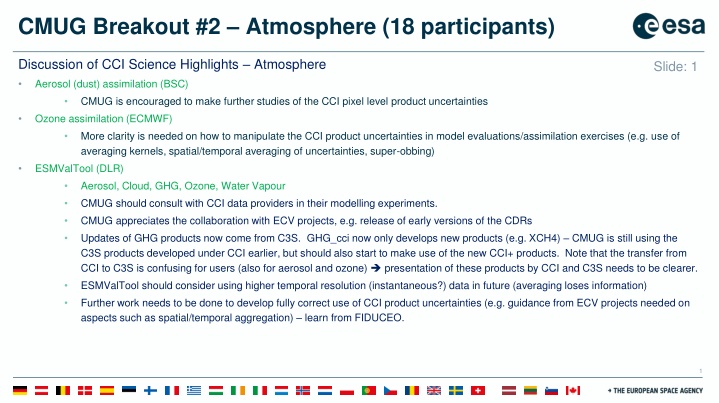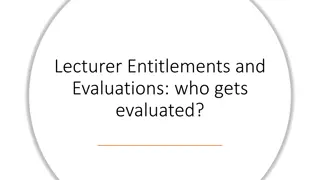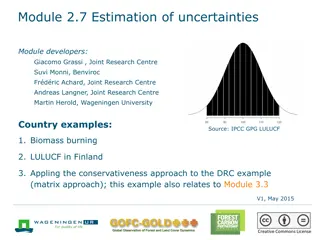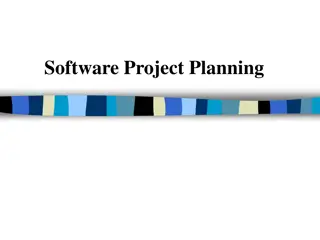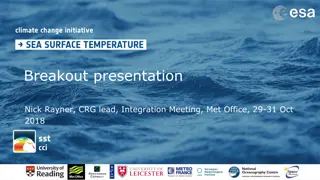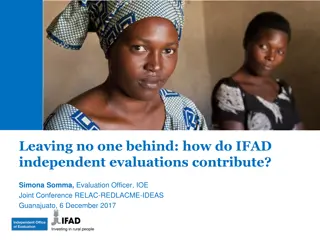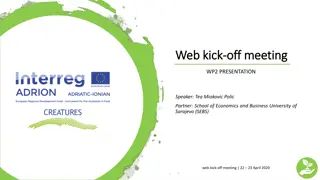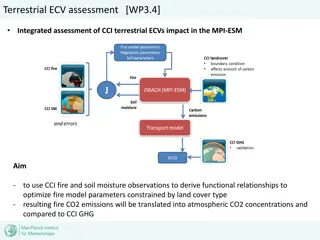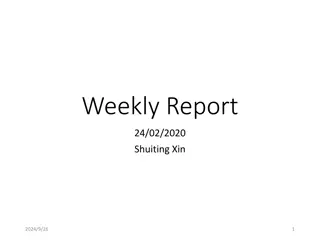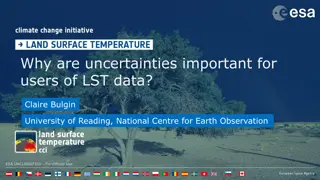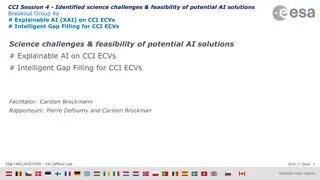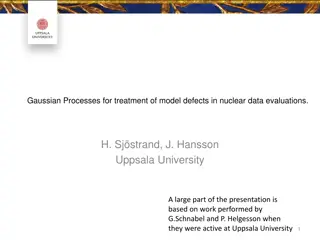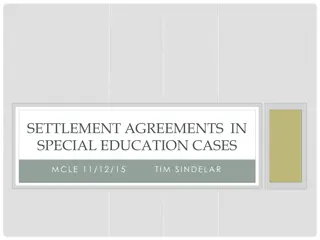CCI Science Highlights: Uncertainties and Model Evaluations
Discussion at the CMUG Breakout session on atmosphere science highlights from the CCI, focusing on aerosol and ozone assimilation, product uncertainties, collaboration with ECV projects, and transitioning from CCI to C3S. Recommendations include the need for clearer presentation of products, utilizing higher temporal resolution data, and improving understanding of uncertainties for model evaluations. Suggestions for future studies involve investigating aerosol indirect effects, constraining model parameterizations, and exploring air-sea interactions.
Download Presentation

Please find below an Image/Link to download the presentation.
The content on the website is provided AS IS for your information and personal use only. It may not be sold, licensed, or shared on other websites without obtaining consent from the author.If you encounter any issues during the download, it is possible that the publisher has removed the file from their server.
You are allowed to download the files provided on this website for personal or commercial use, subject to the condition that they are used lawfully. All files are the property of their respective owners.
The content on the website is provided AS IS for your information and personal use only. It may not be sold, licensed, or shared on other websites without obtaining consent from the author.
E N D
Presentation Transcript
CMUG Breakout #2 Atmosphere (18 participants) Discussion of CCI Science Highlights Atmosphere Slide: 1 Aerosol (dust) assimilation (BSC) CMUG is encouraged to make further studies of the CCI pixel level product uncertainties Ozone assimilation (ECMWF) More clarity is needed on how to manipulate the CCI product uncertainties in model evaluations/assimilation exercises (e.g. use of averaging kernels, spatial/temporal averaging of uncertainties, super-obbing) ESMValTool (DLR) Aerosol, Cloud, GHG, Ozone, Water Vapour CMUG should consult with CCI data providers in their modelling experiments. CMUG appreciates the collaboration with ECV projects, e.g. release of early versions of the CDRs Updates of GHG products now come from C3S. GHG_cci now only develops new products (e.g. XCH4) CMUG is still using the C3S products developed under CCI earlier, but should also start to make use of the new CCI+ products. Note that the transfer from CCI to C3S is confusing for users (also for aerosol and ozone) presentation of these products by CCI and C3S needs to be clearer. ESMValTool should consider using higher temporal resolution (instantaneous?) data in future (averaging loses information) Further work needs to be done to develop fully correct use of CCI product uncertainties (e.g. guidance from ECV projects needed on aspects such as spatial/temporal aggregation) learn from FIDUCEO. 1
CMUG Breakout #2 - Atmosphere Discussion of CCI Science Highlights Atmosphere Slide: 2 Climate Monitoring Facility (CMF) (not presented during the CMUG IM) Comparison of CCI ECVs with reanalysis is becoming a tool inside the C3S CDS CMUG should liaise with the CCI Toolbox team (KE project) to see if there is any scope for synergy with CMF and ESMValTool General Feedback on the CMUG studies Consistency (note the 2020 CCI paper on this) CMUG could contribute to taking this forward in Phase 2 CMUG should look more deeply into using the obs data to study key model processes, rather than just providing diagnostics obs4MIPs: can the process be speeded up? E.g of reviewing the Tech Notes, outdated data sets need to be updated, ... Also users need more help assessing which data sets are best there needs to be regular updated assessments of the different data sets available (e.g. GEWEX water vapour assessment, obs4MIPs data set traffic light indicators). Obs assessment exercises also need to have a clearer idea of what information they should provide to users. New ideas Use of CCI ECVs for investigating aerosol indirect effects, e.g. for constraining model parameterisations Constrain reanalysis with of observed cloud optical depth, and use of cloud + aerosol products from the same sensor in radiative closure study. Use of instantaneous measurements for process studies (e.g. mixed-phase and convective clouds) Response of CMIP models to air-sea interactions and impacts at different scales. 2
CMUG Breakout #2 - Atmosphere Discussion of CCI Science Highlights Atmosphere Slide: 3 3
CMUG Breakout #2 - Atmosphere Discussion of CCI Science Highlights Atmosphere Slide: 4 4
CMUG Breakout #2 - Atmosphere Discussion of CCI Science Highlights Atmosphere Slide: 5 5
CMUG Breakout #2 - Atmosphere Discussion of CCI Science Highlights Atmosphere Slide: 6 6
CMUG Breakout #2 - Atmosphere Discussion of CCI Science Highlights Atmosphere Slide: 7 7
